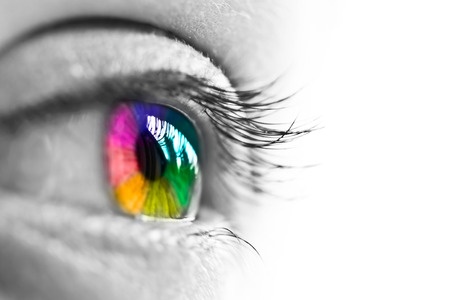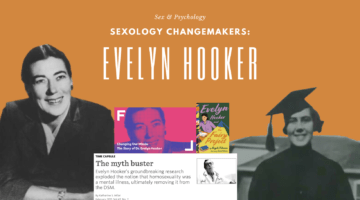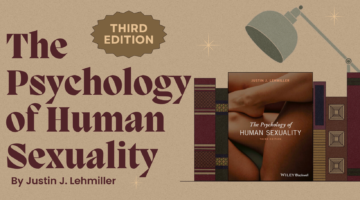The Eyes Are The Window To Our Sexual Orientation?
August 6, 2012 by Justin Lehmiller
Scientists who want to study what people find sexually arousing usually face a few major challenges. For one thing, simply asking people how aroused they feel in response to a sexual image or video is problematic because not everyone is willing to admit what turns them on. To get around this difficulty, some researchers have turned to instruments that measure the amount of blood that flows to the genitals. However, these tools are rather invasive because they require participants to attach electronic recording devices to their nether regions, which not everyone is comfortable doing and consequently limits the types of people willing to participate in such research. Fortunately, a new study has found a deceptively simple way of dealing with all of these issues that may provide a more reliable gauge of sexual arousal and sexual orientation [1]. And all you have to do is look into a subject’s eyes.
The idea for this study came out of past research indicating that our pupils naturally dilate when we see something interesting. This is an involuntary response activated by our autonomic nervous system, a bodily system that controls breathing, digestion, heart rate, and many other automatic processes. Pupil dilation is therefore something that it unlikely to be under a person’s conscious control. One previous study conducted in the 1960s found that people’s pupils tend to dilate when they see sexually arousing imagery, but that study only looked at a total of 10 participants (half heterosexual and half homosexual), all of whom were men.
In the new study, 325 men and women of varying sexualities (heterosexual, homosexual, and bisexual) watched a series of one-minute video clips in random order. The video content was either a man masturbating, a woman masturbating, or a neutral landscape. A gaze-tracking camera measured the size of participants’ pupils every two milliseconds as the videos were shown. All videos were of equivalent brightness to ensure that changes in light did not affect pupil size.
Let’s talk about the men’s results first. Heterosexual men showed the most pupil dilation in response to female images, while gay men showed the most dilation in response to male images. Bisexual men exhibited strong dilation in response to both male and female images. These results are virtually identical to those obtained in studies where male sexual arousal is assessed by genital blood flow.
How did things look for women? This is where the story gets more complex, so I’ll start with the more straightforward findings first. Lesbians dilated the most in response to female images, just like the heterosexual men. Also, just like bisexual men, bisexual women showed dilation in response to both male and female images. The kicker is that heterosexual women showed this bisexual pattern too. Interestingly, studies of women’s genital arousal have actually found the same thing (i.e., that heterosexually-identified women seem to get turned on by both male and female sexual content). Does this mean that all heterosexual women are really just closet bisexuals? No, and that’s not what these results should be taken to mean. It’s just that women (and in particular, heterosexual women) often exhibit a discrepancy between physical and psychological measures of arousal and we don’t know exactly why–but many scientists believe it means that women tend to have a more “flexible” sexuality than men in that women’s bodies are more capable of responding to a wider range of sexual stimuli.
Overall, these findings tell us that pupil dilation appears to be a valid measure of sexual arousal that can tell us the same thing as genital measures without being quite as invasive. Moreover, pupil dilation may be an effective way of determining someone’s sexual orientation; however, it may not provide as clear-cut of an answer for women as it does for men.
Want to learn more about Sex and Psychology? Click here for previous articles or follow the blog on Facebook (facebook.com/psychologyofsex), Twitter (@JustinLehmiller), or Reddit (reddit.com/r/psychologyofsex) to receive updates.
[1] Rieger, G., & Savin-Williams, R. C. (2012). The eyes have it: Sex and sexual orientation differences in pupil dilation patterns.PLoS ONE 7(8):e40256.doi:10.1371/journal.pone.0040256
Image Source: iStockphoto.com
You Might Also Like:

Dr. Justin Lehmiller
Founder & Owner of Sex and PsychologyDr. Justin Lehmiller is a social psychologist and Research Fellow at The Kinsey Institute. He runs the Sex and Psychology blog and podcast and is author of the popular book Tell Me What You Want. Dr. Lehmiller is an award-winning educator, and a prolific researcher who has published more than 50 academic works.
Read full bio >


